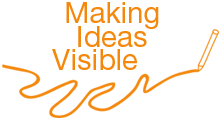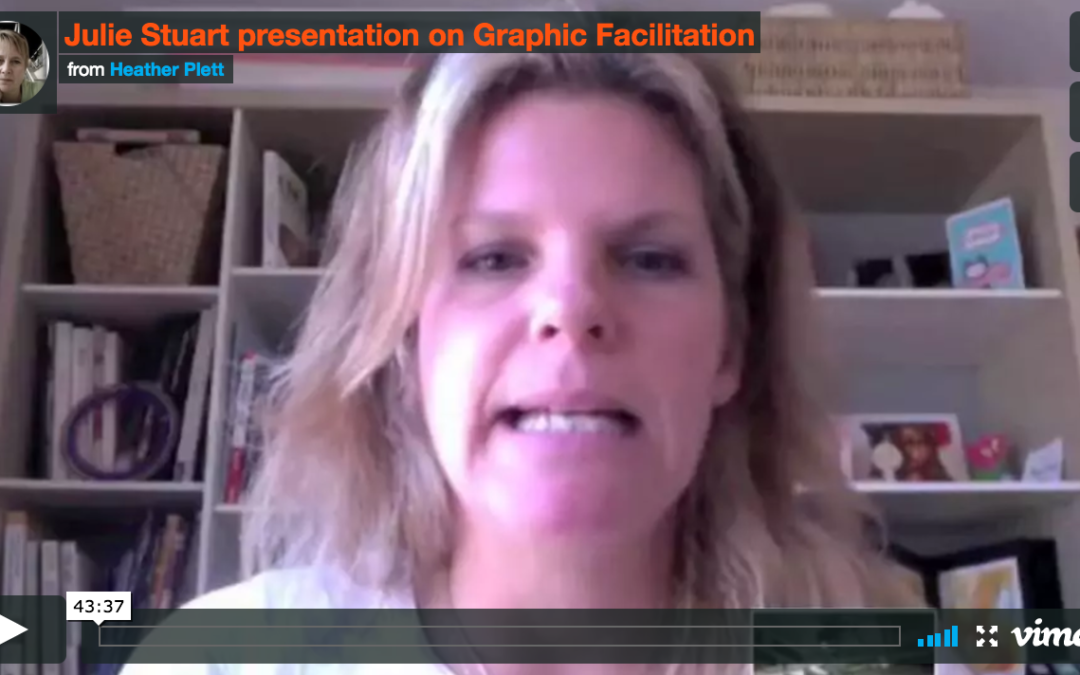I had the distinct pleasure of talking graphic facilitation to a bunch of budding managers when my friend Heather Plett invited me to be a guest speaker in her class at the University of Winnipeg’s Professional Applied Continuing Education program on effective facilitation. Heather had this to say about my contribution to her class:
I’m going through the final assessments of students from my Effective Facilitation class, and quite a few of them mentioned that one of their favourite things about the class was learning about graphic facilitation. Kudos to you! And thanks again for offering your wisdom.
We held the conversation on Skype—a recent, ahem, client of mine—which allowed me to do some show & tell. I started by sharing the digitized versions of several visual maps from meetings I’ve been in.
Patterns, chaos and consensus.
The students were incredibly inquisitive and kept me on my toes with their questions. (And because they were sitting far away from the mike I had to concentrate really hard to hear what they were saying.)
At one point I turned the tables on them and asked how they would pitch a client on using graphic facilitation for a meeting they were designing. I got some great answers.
Here are some of the questions we talked about:
- What’s the best kind of situation or process to use graphic facilitation?
- How does the drawing help people see the bigger picture and reduce conflict?
- What about meetings that don’t end in consensus?
- Are you able to identify a pattern when the group is in chaos?
- Do I make the pictures beforehand? (um, no)
- Is there a particular procedure you follow when you create the map?
- Can things be misinterpreted because of the symbols you use?
About 18 minutes in I told the story about visualizing the biggest conflict I’d ever witnessed—which ended beautifully—when my client, Goddard College, modeled their own deep dialogue process amongst themselves. As I told the students, my job is to be an honest witness and reflect what takes place in the most authentic way. The visual map represents the energy of the meeting—each map has it’s own kind of energy: chaos, excitement, lack of focus, etc.
Listen to the whole interview for the answers.

